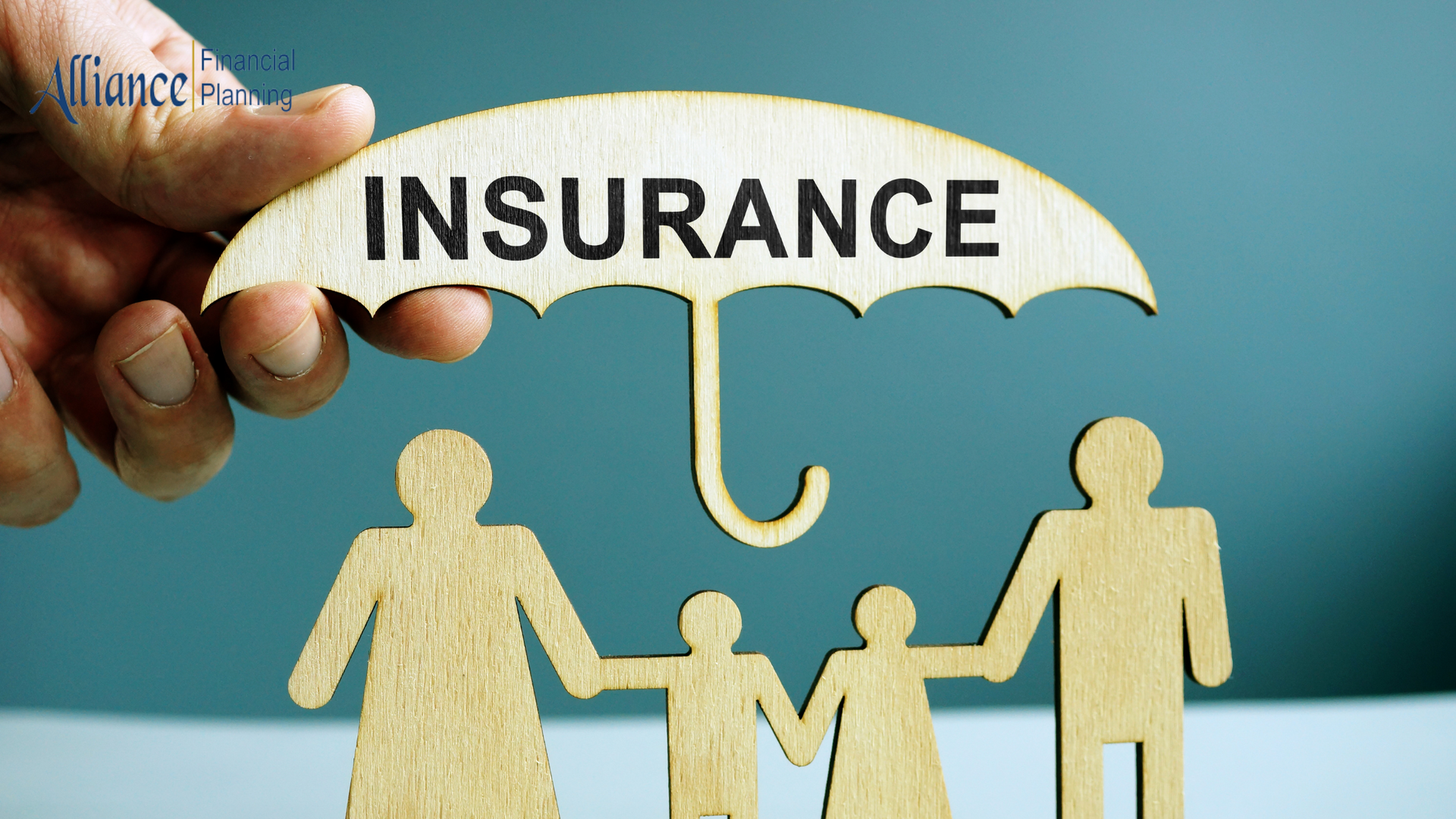Serving All of Kentucky
| 859-977-6006
Licensed to Practice in Multiple States!
Blog Layout
You will need to think about the disposition of your assets at your death and any tax implications.
Statistically speaking, women live longer than men. So if you are married, you'll also probably have the last word about the final disposition of all of the assets you've accumulated during your marriage. You'll want to consider whether these concepts and strategies apply to your specific circumstances.
Transfer taxes
When you transfer your property during your lifetime or at your death, your transfers may be subject to federal gift tax, federal estate tax, and federal generation-skipping transfer (GST) tax. (The top estate and gift tax rate is 40%, and the GST tax rate is 40%.) Your transfers may also be subject to state taxes.
Federal gift tax
Gifts you make during your lifetime may be subject to federal gift tax. Not all gifts are subject to the tax, however. You can make annual tax-free gifts of up to $16,000 (in 2022, $15,000 in 2021) per recipient. Married couples can effectively make annual tax-free gifts of up to $32,000 (in 2022, $30,000 in 2021) per recipient. You can also make tax-free gifts for qualifying expenses paid directly to educational or medical services providers. And you can also make deductible transfers to your spouse and to charity. There is a basic exclusion amount that protects a total of up to $12,060,000 (in 2022, $11,700,000 in 2021) from gift tax and estate tax.
Federal estate tax
Property you own at death is subject to federal estate tax. As with the gift tax, you can make deductible transfers to your spouse and to charity, and there is a basic exclusion amount that protects up to $12,060,000 (in 2022, $11,700,000 in 2021) from tax.
Portability
The estate of someone who dies in 2011 or later can elect to transfer any unused applicable exclusion amount to his or her surviving spouse (a concept referred to as portability). The surviving spouse can use this deceased spousal unused exclusion amount (DSUEA), along with the surviving spouse's own basic exclusion amount, for federal gift and estate tax purposes. For example, if someone died in 2011 and the estate elected to transfer $5,000,000 of the unused exclusion to the surviving spouse, the surviving spouse effectively has an applicable exclusion amount of about $17,060,000 ($12,060,000 basic exclusion amount plus $5,000,000 DSUEA) to shelter transfers from federal gift or estate tax in 2022.
Federal generation-skipping transfer (GST) tax
The federal GST tax generally applies if you transfer property to a person two or more generations younger than you (for example, a grandchild). The GST tax may apply in addition to any gift or estate tax. Similar to the gift tax provisions above, annual exclusions and exclusions for qualifying educational and medical expenses are available for GST tax. You can protect up to $12,060,000 (in 2022, $11,700,000 in 2021)
with the GST tax exemption.
Indexing for inflation
The annual gift tax exclusion, the gift tax and estate tax basic exclusion amount, and the GST tax exemption are all indexed for inflation and may increase in future years.
Income tax basis
Generally, if you give property during your life, your basis (generally, what you paid for the property, with certain up or down adjustments) in the property for federal income tax purposes is carried over to the person who receives the gift. So, if you give your $1 million home that you purchased for $50,000 to your brother, your $50,000 basis carries over to your brother — if he sells the house immediately, income tax will be due on the resulting gain.
In contrast, if you leave property to your heirs at death, they get a "stepped-up" (or "stepped-down") basis in the property equal to the property's fair market value at the time of your death. So, if the home that you purchased for $50,000 is worth $1 million when you die, your heirs get the property with a basis of $1 million. If they then sell the home for $1 million, they pay no federal income tax.
Lifetime giving
Making gifts during one's life is a common estate planning strategy that can also serve to minimize transfer taxes. One way to do this is to take advantage of the annual gift tax exclusion, which lets you give up to $16,000 (in 2022, $15,000 in 2021) to as many individuals as you want gift tax free. As noted above, there are several other gift tax exclusions and deductions that you can take advantage of. In addition, when you gift property that is expected to appreciate in value, you remove the future appreciation from your taxable estate. In some cases, it may even make sense to make taxable gifts to remove the gift tax from your taxable estate as well.
Trusts
There are a number of trusts that are often used in estate planning. Here is a quick look at a few of them.
• Revocable trust. You retain the right to change or revoke a revocable trust. A revocable trust can allow you to try out a trust, provide for management of your property in case of your incapacity, and avoid probate at your death.
• Marital trusts. A marital trust is designed to qualify for the marital deduction. Typically, one spouse gives the other spouse an income interest for life, the right to access principal in certain circumstances, and the right to designate who receives the trust property at his or her death. In a QTIP variation, the spouse who created the trust can retain the right to control who ultimately receives the trust property when the other spouse dies. A marital trust is included in the gross estate of the spouse with the income interest for life.
• Credit shelter bypass trust. The first spouse to die creates a trust that is sheltered by his or her applicable exclusion amount. The surviving spouse may be given interests in the trust, but the interests are limited enough that the trust is not included in his or her gross estate.
• Grantor retained annuity trust (GRAT). You retain a right to a fixed stream of annuity payments for a number of years, after which the remainder passes to your beneficiaries, such as your children. Your gift of a remainder interest is discounted for gift tax purposes.
• Charitable remainder unitrust (CRUT). You retain a stream of payments for a number of years (or for life), after which the remainder passes to charity. You receive a current charitable deduction for the gift of the remainder interest.
• Charitable lead annuity trust (CLAT). A fixed stream of annuity payments benefits a charity for a number of years, after which the remainder passes to your noncharitable beneficiaries, such as your children. Your gift of a remainder interest is discounted for gift tax purposes.
Life insurance
Life insurance plays a part in many estate plans. In a small estate, life insurance may actually create the estate and be the primary financial resource for your surviving family members. Life insurance can also be used to provide liquidity for your estate, for example, by providing the cash to pay final expenses, outstanding debts, and taxes, so that other assets don't have to be liquidated to pay these expenses.
Life insurance proceeds can generally be received income tax free.
Life insurance that you own on your own life will generally be included in your gross estate for federal estate tax purposes. However, it is possible to use an irrevocable life insurance trust (ILIT) to keep the life insurance proceeds out of your gross estate.
With an ILIT, you create an irrevocable trust that buys and owns the life insurance policy. You make cash gifts to the trust, which the trust uses to pay the policy premiums. (The trust beneficiaries are offered a limited period of time to withdraw the cash gifts.) If structured properly, the trust receives the life insurance proceeds when you die, tax free, and distributes the funds according to the terms of the trust.
Content in this material is for general information only and not intended to provide specific advice or recommendations for any individual. All performance referenced is historical and is no guarantee of future results. All indices are unmanaged and may not be invested into directly.
The information provided is not intended to be a substitute for specific individualized tax planning or legal advice. We suggest that you consult with a qualified tax or legal professional.
LPL Financial Representatives offer access to Trust Services through The Private Trust Company N.A., an affiliate of LPL Financial.
This article was prepared by Broadridge.
LPL Tracking #1-05093199

By Diane Verhalen
•
09 Jan, 2024
Asset management and financial wellness can help develop long-term confidence when wealth transfers from generation to generation. Understanding and implementing financial wellness techniques is essential for effectively sharing wealth with the next generations. Here are some financial wellness tips to help manage generational wealth transfer more confidently: Tip #1 - Participate in Estate Planning A vital pillar for managing generational wealth transfer is thorough estate planning. Estate planning doesn't just involve drafting a will; an estate plan should include provisions for the possible incapacity of the wealth owner, power of attorney, healthcare directives, and other appropriate documents for efficient wealth transfer. For high-net-worth individuals, it's essential to incorporate trusts as part of the estate plan to help pursue the future control of assets. Tip #2 - Purchase Life Insurance Life insurance is essential for generational wealth transfer because it allows one to leave a significant amount of money tax-free to heirs. Life insurance can also help cover estate taxes and provide liquidity when needed. Tip #3 - Plan for Taxes Generational wealth involves a significant transfer of resources, which may be subject to various taxes. Therefore, understanding which taxes may impact an estate and strategically planning for taxes plays a pivotal role in preserving assets for the next generation. Consulting tax, legal, and financial professionals is essential, as they can help guide you through the tax planning process and various tax laws that pertain to your situation. Tip #4 - Diversify Portfolio Investments A portfolio with diverse investments may help mitigate the risk of losing money. Variety in investment can help guard generational wealth so it is not as affected by changes in a single market occurrence. Engaging financial professionals to help manage these portfolios effectively may be beneficial. Tip #5 - Encourage Education and Mentorship Financial education, mentorship, and training are critical when transferring wealth to the younger generation. Education helps the next generation comprehensively manage the wealth they inherit. Encourage taking financial literacy courses, attending financial workshops, and seeking help from financial professionals. Tip #6 - Define Philanthropic Goals High-net-worth families often use philanthropy as a wealth transfer strategy. Besides tax breaks, philanthropy demonstrates passing on values to inheritors. Therefore, it's essential to incorporate philanthropic goals into the wealth transfer plan alongside other financial wellness techniques. Tip #7 - Communicate Making sure that everyone involved has a clear understanding of the owner's wishes concerning generational wealth. Regular meetings help keep everyone updated on plans to transfer wealth and to whom. Also necessary is understanding wishes for care if benefactors become incapacitated, who is POA, and so on, which can help deter problems later and avoid family conflicts. Tip #8 - Engage Professionals Engaging professionals in family meetings is beneficial for efficient communication and understanding among the parties involved. A team of financial, tax, trust, and estate legal professionals can provide recommendations based on the latest regulations, investment strategies, goals, and wealth transfer plans to help assets remain intact for heirs. In conclusion, managing generational wealth is essential in preserving it for future generations. Part of developing financial wellness is emphasizing the importance of implementing these eight tips to help navigate the plan to transfer wealth into a more manageable goal. Important Disclosures: The opinions voiced in this material are for general information only and are not intended to provide specific advice or recommendations for any individual. To determine which insurance product(s) or investment(s) may be appropriate for you, consult your financial professional prior to purchasing or investing. There is no guarantee that a diversified portfolio will enhance overall returns or outperform a non-diversified portfolio. Diversification does not protect against market risk. This information is not intended to be a substitute for specific individualized tax or legal advice. We suggest that you discuss your specific situation with a qualified tax or legal advisor. LPL Financial Representatives offer access to Trust Services through The Private Trust Company N.A., an affiliate of LPL Financial. This article was prepared by Fresh Finance. LPL Tracking #502413-01

By Diane Verhalen
•
18 Dec, 2023
In 2024, LPL Research believes markets will make a definitive turn to a more recognizable place. En route, the transition will be marked by meaningful shifts in a few key areas. Inflation is going down. The risk of a recession is bubbling up again as the effect of post-pandemic stimulus wanes. And the end of the Federal Reserve’s (Fed) rate-hiking campaign is indeed upon us. Where the last two years had investors focused on inflation, market volatility, and striving for a sense of economic balance, we now can expect to see some return to the previous status quo—that is, a less-stringent Fed, normalizing inflation, and a slower growth environment. We’ve seen indications of this reset—receding inflation, rates stabilizing, more modest equity market performance, and go-forward economic forecasts that have been dwindling. From LPL Research’s perspective, this turning point for the markets and economic landscape can be characterized as a return to familiar economic and market patterns, leaving behind the volatility of policy and economic swings experienced in recent years, and moving toward a steadier environment. LPL Research’s Outlook 2024: A Turning Point provides insight and analysis into next year’s opportunities, challenges, and potential surprises. We understand that making progress toward long-term financial goals requires a strong plan and sound advice. The insights in this report, combined with guidance from me, will help position you to navigate this turning point and work toward achieving your objectives. Access the Full Report Here IMPORTANT DISCLOSURES This material is for general information only and is not intended to provide specific advice or recommendations for any individual. The economic forecasts may not develop as predicted. Please read the full OUTLOOK 2024: A Turning Point publication for additional description and disclosure. This research material has been prepared by LPL Financial LLC. Tracking # 512569 (Exp. 12/24)

By Diane Verhalen
•
11 Jul, 2023
What does the term "financial freedom" mean to you? For some, it means freedom from a particular workplace or industry. For others, it means the opportunity for an early retirement or the ability to start a long-desired business. Consider these three strategies that may help investors pursue financial independence this season. Start Early The power of compounding might be significant—the more you invest sooner, the longer there is for the compounding effect to help. In general, having more time invested in the market helps manage day-to-day volatility and possibly major recessions. If your retirement is not for another 20 or 30 years, a recession may be good news for your investments, as it may allow you to invest funds in long-term assets at historically-low prices. Accurately Assess Your Risk Tolerance Suppose your investments lose 40% of their value; what might you do? Are you content to let them ride (after researching the stability of the underlying assets), or would you be tempted to go to cash for a while? Everyone's risk tolerance is different. It is crucial not to invest beyond your tolerance. For some, this means an aggressive portfolio that includes mostly stocks. For others, this may mean bonds, Treasurys, and other assets. There is no wrong answer, but forcing yourself to invest more than you are comfortable with or in assets you are not comfortable with could set you up to make unwise knee-jerk decisions the next time there is market volatility. Build Your Desired Portfolio Many investors subscribe to the "lazy" portfolio method—a set-it-and-forget-it mix of index funds or exchange-traded funds (ETFs) that follow a particular index. For example, many ETFs and index funds follow the major market indices, including the Dow Jones, the NASDAQ, the S&P 500, and the Russell 2000. By investing in these broader funds, you might diversify your portfolio without the effort of researching, picking, and following individual stocks. There are several advantages to the lazy portfolio approach, including: ● Instant diversification ● Relatively low fees ● Simplicity Though you need to monitor your investments regularly, you do not need to research particular stocks or companies in-depth to feel confident about the investments. The major market indices automatically rebalance—for example, if a company underperforms and no longer has the market cap requirements for the S&P 500, it is cycled off the list and replaced with a new company. Your financial professional works with you to evaluate your risk tolerance and then can help you choose a basket of assets for your portfolio. Important Disclosures: The opinions voiced in this material are for general information only and are not intended to provide specific advice or recommendations for any individual. To determine which investment(s) may be appropriate for you, consult your financial professional prior to investing. Investing involves risks including possible loss of principal. No investment strategy or risk management technique can guarantee return or eliminate risk in all market environments. All indexes are unmanaged and cannot be invested into directly. An investment in Exchange Traded Funds (ETF), structured as a mutual fund or unit investment trust, involves the risk of losing money and should be considered as part of an overall program, not a complete investment program. An investment in ETFs involves additional risks such as not diversified, price volatility, competitive industry pressure, international political and economic developments, possible trading halts, and index tracking errors. There is no guarantee that a diversified portfolio will enhance overall returns or outperform a non-diversified portfolio. Diversification does not protect against market risk. Rebalancing a portfolio may cause investors to incur tax liabilities and/or transaction costs and does not assure a profit or protect against a loss. Dow Jones Industrial Average (DJIA): A price-weighted average of 30 blue-chip stocks that are generally the leaders in their industry. The NASDAQ-100 is composed of the 100 largest domestic and international non-financial securities listed on The Nasdaq Stock Market. The Index reflects companies across major industry groups including computer hardware and software, telecommunications, retail/wholesale trade and biotechnology, but does not contain securities of financial companies. S&P 500 Index: The Standard & Poor's (S&P) 500 Index tracks the performance of 500 widely held, large-capitalization US stocks. The Russell 2000 Index is an unmanaged index generally representative of the 2,000 smallest companies in the Russell Index, which represents approximately 10% of the total market capitalization of the Russell 3000 Index. This article was prepared by WriterAccess. LPL Tracking #1-05370165The body content of your post goes here. To edit this text, click on it and delete this default text and start typing your own or paste your own from a different source.

11 Jul, 2023
Our 2023 investing outlook started with a theme of returning to normalcy. Considering 2022’s market volatility and the aftereffects of the pandemic, the idea of finding balance was certainly a welcomed change. It’s a theme we could all embrace six months ago and what we will continue to rally around through year-end. That’s not to say that 2023 hasn’t come with its own set of challenges. We saw two regional banks fail in rapid-fire succession in March—and another closed its doors in May. Collectively representing over $530 billion in assets, the trio ranks as the second, third, and fourth largest bank failures to date. We also held our breath as a last-minute deal to raise the debt limit came together as the clock ticked closer to default. Despite the market gyrations these events caused and a banking sector still on tenterhooks, the overall financial system seems stable. The insights in LPL Research’s Midyear Outlook 2023: The Path Toward Stability will help position investors, along with guidance from their financial professional, to achieve their goals by providing guidance and actionable insights as the second half of 2023 unfolds. View the digital version - https://lpl.com/news-media/research-insights/lpl-research-midyear-outlook-2023-the-path-toward-stability.html IMPORTANT DISCLOSURES This material is for general information only and is not intended to provide specific advice or recommendations for any individual. The economic forecasts may not develop as predicted. Please read the full MIDYEAR OUTLOOK 2023: The Path Toward Stability publication for additional description and disclosure. This research material has been prepared by LPL Financial LLC. Tracking # 1-05371105 (Exp. 06/24)

By Diane Verhalen
•
01 Jun, 2023
Whether you are expecting your first child or have been a parent for years, finances and building a future for your family go hand-in-hand. Luckily, there are money moves you can make now to help manage financial stress, support yourself and your loved ones, and help your children as they get older. Here are three key financial moves all parents should consider making. Review and Update Your Life Insurance For many, life insurance is a necessary but unmanaged expense for a good reason. It is not pleasant to consider a situation where your life insurance policy may become relevant to your loved ones. However, for parents, in particular, having adequate life insurance might be the difference between your children struggling or enjoying a comfortable future. Many employers offer life insurance to their employees, often at a specific multiplier of their salary. For some families, this amount may be adequate; but in other cases, you may need to purchase an additional term policy that provides coverage until your youngest child is an adult. It is worth reviewing how much coverage you have, then comparing this with your average projected earnings over the next decade or so. Also, update your beneficiaries after any major changes. A divorce decree does not remove an ex-spouse's name from a life insurance policy. For any changes in your marital status or if a named beneficiary passes away, you must update your list of beneficiaries with your insurer. Consider a College Savings Account As anyone who is still paying their student loans could confirm, college costs may be a major expense. For many, student loans are second only to the cost of a home purchase. Fortunately, time is on your side when saving for college for those with young children. The funds you put toward your child's future college education may have years to grow. In many states, contributing to a 529 college savings account might even provide you with a state tax credit. Additionally, 529 funds do not have to be for a specific child. If your child gets a scholarship or decides not to attend college, you are free to change the beneficiary to someone else, even yourself. These accounts may also pass down and can be used by grandchildren. Check Your Health Insurance Coverage Health care costs might also be a huge part of any family's budget. And while many employer-sponsored health insurance plans may provide you with decent coverage at a reasonable cost, this is not always the case. Some families with fixed annual health care expenses may benefit from a lower deductible plan that provides more coverage, while other families with infrequent health care costs might find a high-deductible health plan with lower premiums is an easier expense in their budget. If you are not sure about your options, a financial professional or insurance broker may be able to provide more information. Important Disclosures The opinions voiced in this material are for general information only and is not a solicitation to sell any insurance product or security, nor is it intended as any financial or tax advice. For information about specific insurance needs or situations, contact your insurance agent. This article is intended to assist in educating you about insurance generally and not to provide personal service. They may not take into account your personal characteristics such as budget, assets, risk tolerance, family situation or activities which may affect the type of insurance that would be right for you. In addition, state insurance laws and insurance underwriting rules may affect available coverage and its costs. Guarantees are based on the claims paying ability of the issuing company. If you need more information or would like personal advice you should consult an insurance professional. You may also visit your state’s insurance department for more information. Prior to investing in a 529 Plan investors should consider whether the investor's or designated beneficiary's home state offers any state tax or other state benefits such as financial aid, scholarship funds, and protection from creditors that are only available for investments in such state's qualified tuition program. Withdrawals used for qualified expenses are federally tax free. Tax treatment at the state level may vary. Please consult with your tax advisor before investing. This article was prepared by WriterAccess. LPL Tracking #1-05268284

By Diane Verhalen
•
24 May, 2023
The thought of retiring may be intimidating for anyone—but if you own your own business, handing your "baby" to new owners might be enough to stop you in your tracks. What might you do to set your successor up for success? What should all business owners know before they go? Set Specific Retirement Goals When you retire, you want to be running to something—not from something. And after years of operating your business, moving to a slower-paced, less-structured lifestyle might seem very appealing. However, you probably need some structure, and setting specific goals may be the way to get there. For example, you may decide you want to spend more time on your hobbies. Instead of letting that wish stagnate, you might make a point to set aside a day or two each week to devote to your hobbies. Plan to Turn Your Business Over One of the biggest potential dangers during a business transition is failing to cut the cord when warranted. If the business founder/seller remains overly involved in the business, this might stifle growth and send mixed messages about who is in charge. Though there is nothing wrong with staying close for a few years to answer questions, once you exit, it is probably wiser if it is clean. Make—and stick to—a succession plan to manage complications. Set Up Your Support Team Adjusting to retired life may be tough, especially if you also wind down your involvement in a business. You may need a strong team of professionals—retirement, tax, legal, and possibly others—to help you stay on track and manage any financial trouble. Working with financial professionals may help ease the transition to retirement, even if you do not require the services of all these financial professionals every year. Ensure Your Savings are on Track Many business owners re-invested their retirement assets back into their businesses. This strategy might make retirement tricky, especially if these assets need extraction first. This example gives a good reason for adequate diversification of non-business retirement savings. Your portfolio might benefit from sufficient diversity by holding growth and value investments. If you have the financial capacity to contribute to a Roth IRA, this type of retirement account may be a good way to manage taxes on income and growth on all invested assets. Important Disclosures The opinions voiced in this material are for general information only and are not intended to provide specific advice or recommendations for any individual. To determine which investment(s) may be appropriate for you, consult your financial professional prior to investing. Investing involves risks including possible loss of principal. No investment strategy or risk management technique can guarantee return or eliminate risk in all market environments. There is no guarantee that a diversified portfolio will enhance overall returns or outperform a non-diversified portfolio. Diversification does not protect against market risk. The Roth IRA offers tax deferral on any earnings in the account. Withdrawals from the account may be tax-free, as long as they are considered qualified. Limitations and restrictions may apply. Withdrawals prior to age 59 ½ or prior to the account being opened for 5 years, whichever is later, may result in a 10% IRS penalty tax. Future tax laws can change at any time and may impact the benefits of Roth IRAs. Their tax treatment may change. This article was prepared by WriterAccess. LPL Tracking #1-05361931

By Diane Verhalen
•
10 May, 2023
You may already be aware of the importance of having enough life insurance coverage to handle financial matters that could affect your family in the event of your death. However, determining the appropriate amount of coverage for your family can be complicated. Rather than using an arbitrary formula, such as having enough coverage to equal five to seven times your annual salary, you may want to conduct a “needs analysis.” A needs analysis incorporates an evaluation of your family’s most important financial obligations and goals. It can help you plan to address mortgage debt, college expenses, and funds for your family’s future, as well as liquidity for meeting potential estate tax liabilities with life insurance coverage. Mortgage Debt You may want to consider whether your life insurance proceeds will be sufficient to help pay the remainder of the mortgage on your home. If you are carrying a large mortgage, you may need to increase your life insurance coverage. If you own a second home, you may also want to factor that mortgage into the formula. College Expenses Many people want life insurance proceeds to help cover their children’s undergraduate college, and possibly graduate school, expenses. The amount needed can be roughly calculated by matching the ages of your children with projected college costs adjusted for inflation. Because it may be difficult to project costs that far into the future, it is important to revise this calculation periodically, as your children get closer to college age. When estimating long-term savings goals, it may also be a good idea to be as conservative as possible. Your Family’s Lifestyle The amount you may need to help provide for your surviving spouse and dependents will vary according to your age, health, retirement plan benefits, Social Security benefits, and other assets, along with your spouse’s earning power. Many surviving spouses may already be employed or will find employment, but your spouse’s income alone may not be sufficient to cover your family’s current lifestyle. Providing a supplemental fund can help your family maintain its standard of living in the event of your death. Estate Taxes Life insurance has long been recognized as a method for establishing liquidity at death to pay estate taxes and maximize asset transfers to future generations. Be sure to work with your tax and legal advisors to help you establish the desired results. Existing Resources If your current assets and any other death benefits are sufficient to cover your financial needs and obligations, you may not need additional life insurance for these purposes. However, if they are inadequate, the difference between your total assets and your total needs may be funded with life insurance. You must consider many factors when completing a needs analysis. In addition to the areas already mentioned, ask yourself the following questions: · What are your estimated Social Security benefits at retirement? · How do you “inflation-proof” your family income, so the real purchasing power of those dollars does not decrease? · What is the earning potential of your surviving spouse? · How often should you review your needs analysis? · How can life insurance help provide resources for your retirement? · How do you structure your estate to reduce the impact of estate taxes? · Which of your assets are liquid and which would not be reduced by a forced sale? · Which of your assets would you want your family to retain for sentimental reasons or for future growth possibilities? As you evaluate your insurance needs, remember to assess your existing policies. Calculate the additional coverage you may need based on your family’s financial obligations and any other resources, such as retirement benefits and personal savings. Planning now may help to preserve your family’s financial future. Important Disclosures The opinions voiced in this material are for general information only and are not intended to provide specific advice or recommendations for any insurance product. To determine which insurance product(s) may be appropriate for you, consult your financial professional prior to purchasing. This information is not intended to be a substitute for specific individualized tax advice. We suggest that you discuss your specific tax issues with a qualified tax advisor. This article was prepared by Liberty Publishing, Inc. LPL Tracking #1-05258205The body content of your post goes here. To edit this text, click on it and delete this default text and start typing your own or paste your own from a different source.
Phone
Address
525 Darby Creek Rd Suite 29
Lexington, KY 40509
Business Hours
- Mon - Fri
- -
- Sat - Sun
- Closed
Disclosures
Securities and financial planning offered through LPL Financial, a Registered Investment Advisor, Member FINRA/SIPC.
The LPL Financial Registered Representatives associated with this site may only discuss and/or transact securities business with residents of the following states: AL, AR, FL, IL, IN, KY, NC, NY, OH, SC, TN, TX.
Content, including images, displayed on this website is protected by copyright laws. Downloading, republication, retransmission or reproduction of content on this website is strictly prohibited. Terms of Use
| Privacy Policy



